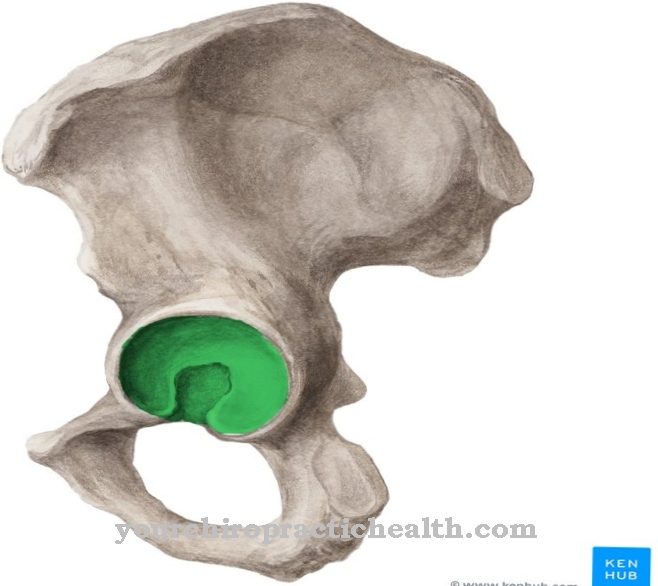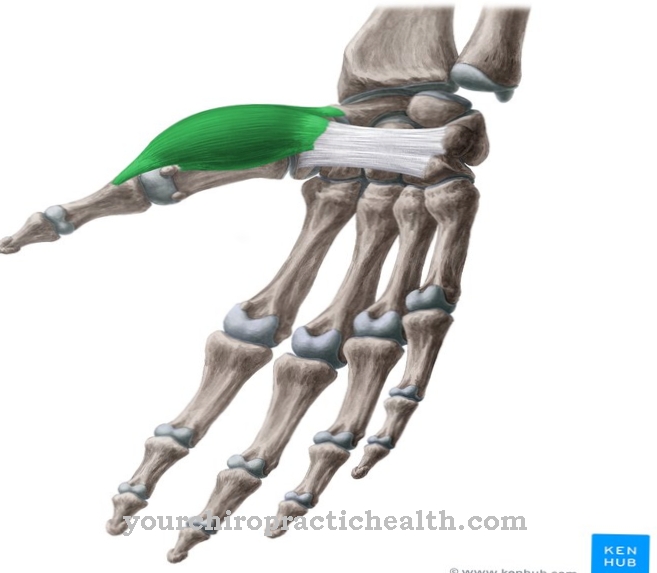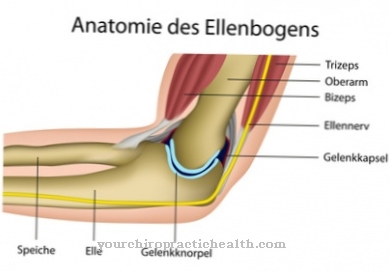Of the Gill arch is a six-part, anatomical system in the early embryonic phase of humans. Different parts of the human body develop from the six relatively independent gill arches during later pregnancy. If the branchial arch is affected by developmental disorders, deformities can develop in the fetus.
What is the gill arch?
The head intestine of all vertebrate embryos proliferates in the so-called gill arches. These are gill-like folds that are only relevant to the fetus and its development. Anatomical structures are formed from them up to birth. In humans, the gill arch develops during the early embryonic period.
Between the third and fifth week of embryonic development, the embryonic connective tissue sprouts and forms a total of six arches. Only four of these are relevant for the later development of the fetus. The fifth gill arch is only rudimentary in all mammals. In the interior view, the gill arches with gill folds or pharyngeal pouches appear. In the external view they correspond to gill furrows. The anatomical structure of the gill arch is also known as the bronchial arch or pharyngeal arch. Sometimes it is also referred to as the pharyngeal arch or visceral arch.
Anatomy & structure
The individual gill arches of humans are completely metameric, that is, they have the same structure. During embryonic development, a cotyledon is formed in each gill arch, from which cartilage, nerve, artery and muscle grow later. These structures can be individually assigned to each gill arch.
This means that together they do not form a coherent system, but exist as a self-contained system with the respective associated branchial arch. The first and second gill arches develop first. This development is followed by the formation of the third and fourth gill arch. The fifth arch is hardly laid out. The sixth passes into the fourth later in the embryonic phase. The internal pharyngeal pouches are directly related to the gill arches and make up a total of five separate structures.
Function & tasks
Organs develop from the gill arches of the embryo in the later development phase of the fetus. These organs are also known as branchiogenic organs. The first gill arch forms parts of the face. These include the jaw parts, the palate and the ossicles, hammer and anvil. The first branchial arch nerve later becomes the fifth cranial nerve.
His muscles become masticatory muscles, with his own artery largely receding. The stapes are formed from the second branchial arch. The upper hyoid bone and the temporal bone also emerge from the second branchial arch. The artery of this arch later recedes. Its nerve becomes the seventh cranial nerve and its muscles develop into mimic muscles in particular. The lower hyoid bone later emerges from the third branchial arch. Its muscle becomes the stylus-pharynx muscle, with its artery becoming the internal carotid artery.
His nerve later forms the ninth cranial nerve, the so-called tongue and throat nerve. From the fourth branchial arch, in interaction with the sixth branchial arch, the larynx, including the larynx and pharynx muscles, is created. Its artery becomes the aortic arch and subclavian artery. Together with parts of the sixth gill arch, the nerve of the fourth gill arch also develops into the tenth cranial nerve. The only rudimentary fifth branchial arch does not form any definite structures.
On the other hand, anatomical structures do develop from the five pharyngeal pouches or gill slits of the gill arch during the embryonic phase. The first pharynx becomes the ear trumpet and the ear canal in particular. The almonds of the palate emerge from the second pharynx. The third and fourth form the parathyroid and thymus. The fifth pharynx becomes C cells, which later populate the thyroid.
You can find your medication here
➔ Medicines against memory disorders and forgetfulnessDiseases
The gill arch can be affected by embryonic development disorders. Such a developmental disorder could possibly be traced back to nicotine or alcohol consumption during pregnancy. The cleft lip and palate is one of the best-known phenomena in the context of a developmental disorder of the gill arch.
In the gill arch, individual parts of the face develop separately in order to grow together later. If these individual parts do not or only incompletely fuse in the seventh week of pregnancy, a deformed intermaxillary segment can form, for example. The upper jaw bulges from certain parts of the gill arch later grow together with the nasal bulges. They form the left and right parts of the upper lip and also shape the individual sides of the upper jaw. If this development is disturbed or relevant tissue parts open up again in the course of development, a cleft jaw or lip cleft develops, which can be pronounced either on one side or on both sides.
Many other abnormalities of the jaw or teeth can be traced back to developmental disorders of the gill arch. Goldenhar syndrome, for example, is a congenital malformation syndrome that can result in asymmetrical corners of the mouth, underdeveloped cheeks and jaw parts as well as small ears, narrow eyelids and even missing eyes. The children are often also affected by a heart defect, kidney damage, or hearing and tooth damage.
Medicine now assumes that the cause of the syndrome is a thrombus in the tissue of the first and second gill arch and the first pharynx. The thrombus is presumably preceded by an interrupted blood supply to these tissues. Little is known about the causes of such a circulatory disorder. The syndrome should not be hereditary.



























